Time travel, slackers and Wonder Woman: the best comic books of 2016
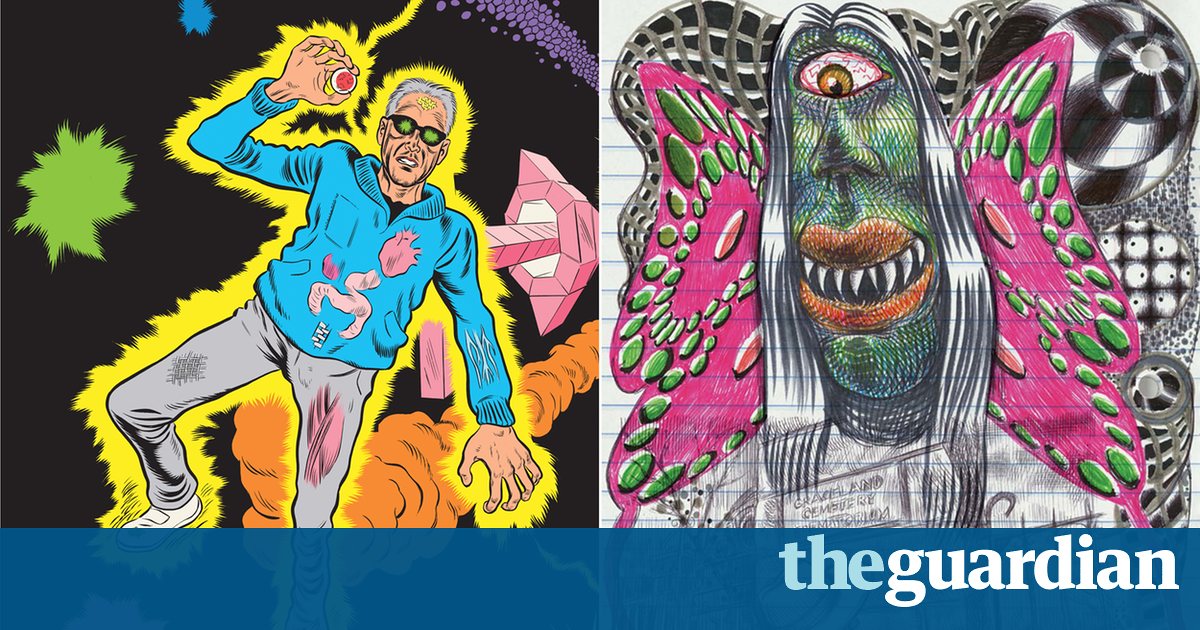
A banner year for the artform saw excellent new Hellboy and Wonder Woman volumes as well as a frighteningly topical time travel story
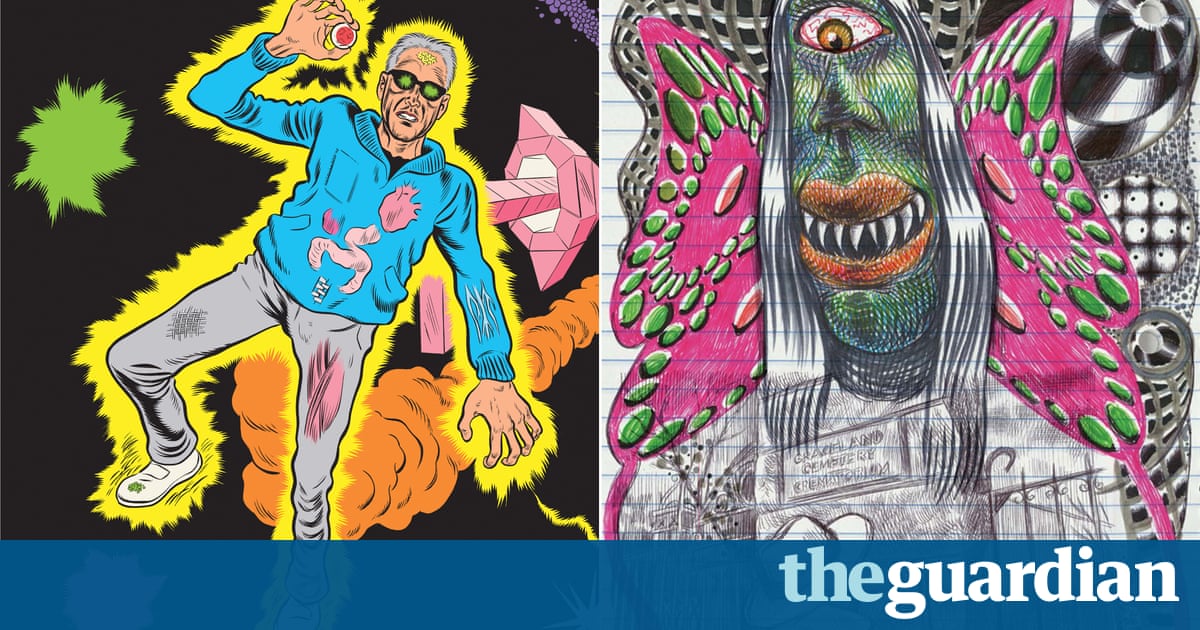
Even if no one sheds a tear for 2016, at least the year produced such an amazing crop of comics that we need two No 1 spots.
Some of the best contemporary work in the medium emerged from startling corners this year: Marvels decision to let artist-driven books go more than a month between issues made room for some beautiful uninterrupted work from people such as Black Widow artist Chris Samnee, while at Marvels competitor Image, Dustin Nguyen and Jeff Lemires watercolor space opera Descender remains one of the comics shops prettiest offerings, alongside Matt Fraction and Chip Zdarskys improbably, er, touching Sex Criminals.
And several long waits finally ended. Dave McKeans stunning graphic album Black Dog finally emerged from Dark Horse, and the New York Review of Books started reprinting obscure comics, most notably Mark Beyers influential, under-read Agony. Drawn & Quarterly dug up Ben Katchors delightful Cheap Novelties, and John Lewis and Nate Powells remarkable March finished with book three.
It wasnt all great trolls chased female comics creators off Twitter at least twice, and DC relaunched its shared-corporate-property universe by introducing a character from Watchmen into the world without even bothering to inform the creators, Alan Moore and Dave Gibbons, reminding everyone that if an artist wants to maintain control of her work, corporate hero comics may not be the place to start. But in the main, the focus of the industry has shifted toward the cartoonists themselves, with new work from established masters such as Raina Telgemeier and Daniel Clowes and newer voices like Matt Furie and Emil Ferris.
1. Patience by Daniel Clowes
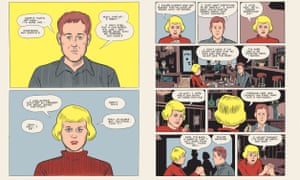
Behold Daniel Clowes magnificently controlled opus Patience, a time-travel epic propelled by slabs of bright, confectionery color and the unhinged grief of a widower. Jack, Patiences driven protagonist, doesnt always know whats going on right in front of him Clowes is fond of giving his blinkered narrator less information than the careful reader. The books time-travel apparatus, an injectable fluid straight out of Philip K Dick, causes Jack to come unstuck in time in a series of beautiful sequences unlike anything the cartoonist or anybody else, for that matter has ever drawn; they give the book its artistic center in the same way Jacks beloved wife, Patience, dead but not gone, anchors its soul. Set in a hopeful future where an obnoxious conservative TV demagogue has somehow become president, the book manages to be unsparing and forward-looking at once. In a year when so much art felt undone in light of current events, Patience is right on time. (Fantagraphics)
1. My Favorite Thing Is Monsters, Vol 1 by Emil Ferris
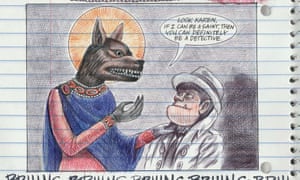
No one has ever made a comic like Emil Ferriss assured, superhumanly ambitious two-part debut graphic novel My Favorite Thing Is Monsters, a rich historical mystery set in 1960s Chicago and rendered in fanatical detail on wide-ruled notebook paper. Ferris dares to change styles whenever it suits the narrative; to occasionally switch media entirely; to spend page after page reproducing great paintings or invented horror comics covers in what appears to be ballpoint pen; to draw her 10-year-old protagonist throughout the book as a werewolf. All the while, her remarkable draftsmanship shines through, sliding into caricature when appropriate and snapping back into realism or sketch. Where Clowes is sparing and precise, Ferris is profuse, both in her stunning renderings and in her generous depictions of a huge cast of intricately depicted characters. The big-hearted, masterly book took 15 years to produce and is only the first of two volumes, but even halfway through, it threatens not merely to exceed established standards of excellence, but to set new ones.
An unusual note: the company that was shipping this book to the US from the Chinese printers went bankrupt, and the government of Panama impounded all 10,000 copies intended for bookstores at the Panama Canal. Several advance copies of the book made it out, and your reviewer is fortunate enough to have had one since August; the rest of them have been released and will finally go on sale in February. A year feels too long to wait to declare this book great. (Fantagraphics)
2. Last Look by Charles Burns
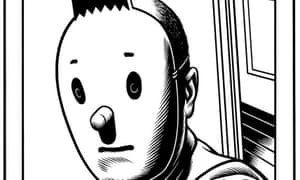
A young man who looks like Hergs Tintin wakes up outside an anonymous bazaar in an unnamed desert, where a little creature shows him the markets various disgusting wares. Soon, the same young man wakes up again, in a more recognizable world, looking more normal and remembering bits and pieces of his sordid love affair and its horrible end. Burns first sustained work since Black Hole is finally collected into a single volume, where its virtuosity is on full display. Like Black Hole, its an intricate, secretive book with a hard truth at its center. Formally, Burns works in a class by himself, crafting pages upon pages of beautiful work that rebound on themselves and demand reading and rereading. The artist works in color for the first time here, and with it, he finds entirely new ways to tell a story. (Pantheon)
3. Ghosts by Raina Telgemeier

Raina Telgemeier has written an affecting magical-realist graphic novel about sisters learning to live in the shadow of impending death, and it manages to stay utterly unpredictable throughout its 256 pages. An unshowy master storyteller in the mode of old-fashioned talents such as the Donald Duck cartoonist Carl Barks, Telgemeier has her narrative up and running before youve realized you cant stop reading about Catrina and Maya, two little girls relocating to northern California in the hopes of an easier life for Maya, who has cystic fibrosis. As the characters learn about the town and its supernatural history, Telgemeier never quite pushes the story in an expected direction, and Catrinas coming of age takes shape. Its a lively, warm story, crafted with younger readers in mind but so deftly executed that anyone interested in comics can find much to admire. (Scholastic)
4. Providence: Act 1 by Alan Moore and Jacen Burrows
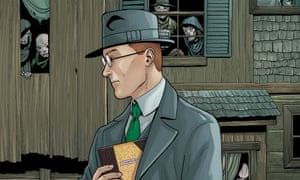
Comics godfather Moore has always loved HP Lovecraft. For what he says will be the final project of his career, the writer has returned to his primary influence to address the horror writer directly, in a meticulously researched 12-part graphic novel that at first appears to be the disconnected, picaresque misadventures of a well-meaning reporter researching a book about New England. Robert Black, the hero, is trying to recover from the suicide of his boyfriend a deadly secret here in the 1920s and trying to hide his Jewish identity, as well. Hes so concerned with making the proper impression, in fact, that he tends to miss little supernatural details about his surroundings that suggest a different Lovecraft story in every new venue. Taken in by the clever homage to one of he 20th centurys great writers, the reader, too, will miss details in the text that suggest a deeper, much more disturbing horror over which all the books characters hang suspended. Burrows style has matured profoundly in the interim between this and Neonomicon, his earlier, extraordinarily nasty and disturbing collaboration with Moore, to which Providence is both prequel and sequel. Now, the artists contours are so polished that the books most frightening images only reveal themselves on a second or third pass, and the horrors at the center of a panel are often dwarfed by the telling detail in the background. (Avatar)
5. Hellboy in Hell: The Death Card by Mike Mignola

Hellboy is dead, but thats nothing new. Worse news, though: Hellboy is also over. After 10 issues exploring the afterlife, writer-artist Mike Mignola finally lays to rest his signature character in the most purely beautiful vision of hell this side of Gustave Dor. Mignola rarely gets his due as a folklorist in his hell stories, though, his ear for legends and myths is as good as its ever been. Here, hes not merely adapting old Irish and French fairy yarns as he does in other Hellboy tales, but crafting a new mythology for a character who, according to the author, was never really intended to come this far. Working thus without a net, Mignola draws some of his strangest and most beautiful images, among them Satans empty throne and Hellboy himself lying under a tree, realizing hes almost finished. It doesnt hurt that Mignola, one of hero comics few successful minimalists, has matured and deepened as an artist over the years, his every image a chorus of obscure gothic imagery carved out of hard blacks with collaborator Dave Stewarts perfect colors. (Dark Horse)
6. Wonder Woman: The True Amazon by Jill Thompson
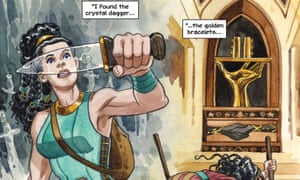
The watercolor virtuoso Jill Thompson writes and paints an assured Wonder Woman graphic novel, her images rich and her characters richer. In a tale set entirely on the island of Themyscira, Thompsons version of the Greek princess, Diana, begins as a bratty, self-involved young woman with no one to tell her no. The depiction rings wholly true to anyone who knows teenagers, and its also a refreshing change from the Bible-story perfection of most early-career superhero prequels. In what appears at first to be a very simple story, The True Amazon has some complex and subtle thematic material at its heart, with Diana and her friend Aletheas relationship mirroring battlefield romances between Greek soldiers in male-dominated myths and histories. And the books structure is classical in the original sense of the word, Dianas pride going before her inevitable fall. For all that, its one of the few superhero books this year a child might genuinely enjoy an easy-to-read, straightforward story with boundless empathy. (DC Entertainment)
7. Carpet Sweeper Tales by Julie Doucet
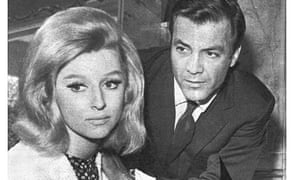
The indie comics pioneer Julie Doucets absence from the form lasted far too long, but at least shes back, and in predictably unpredictable form. With Carpet Sweeper Tales, the Canadian cartoonist has reordered the pages from a bunch of Italian photo comics comic books that use pictures of actors instead of drawn panels and inserted speech bubbles made of text from 1950s back issues of Better Homes and Gardens and Good Housekeeping, among others. The effect is something like if one of the English artist Richard Hamiltons pop art collages was made into a comic at the direction of Gertrude Stein. Read it out loud, Doucet instructs at the books beginning, and if youre willing to do this (observation: this will make you less popular on the subway) you may often find yourself stopping the narration to laugh as a young woman communicates with her suitor entirely in hisses and squeals, or flummoxed when an entire chapters dialogue is quote marks and ellipses. As with the romance comics Doucet mangled to make it, the subjects of Carpet Sweeper Tales are still men, women, and the way they fail to understand each other; Doucet benefits greatly from turning that fundamental misunderstanding on its head. (Drawn & Quarterly)
8. Injection by Warren Ellis and Declan Shalvey

Ellis and Shalveys remarkable sci-fi series has five protagonists, one for each of five planned story arcs, all thus far high-voltage adventure stories about a team of researchers trying to clean up the mess they made by cross-pollinating magic and high technology. Elliss unique, propulsive storytelling has always elevated his work, but here and elsewhere hes flirting with the very, very weird. Shalvey draws both the men-in-suits-with-guns action sequences and the insane psychedelia lurking at the edges of the story with equal aplomb. This years five-part story follows the series Sherlock Holmes analogue, a disagreeable and brilliant detective with the occasional flash of precognition who must find out who has made one of his clients relatives into ham. From there, things get unusual. (Image)
9. Howard the Duck by Chip Zdarsky and Joe Quinones

Chip Zdarsky and Joe Quinones spent 16 issues reworking of one of Marvels most obscure characters in a riot of sight gags, plans that cant help but go wrong, and mean jokes at Spider-Mans expense. (This years two books, by the way, follow the also-excellent Vol 0 of the series, because Marvel relaunches its lines at least once a year these days.) Steve Gerber, Howards late creator, invented the character to serve as his mouthpiece in splenetic stories about the worlds random cruelties, among them the free market and his bosses; Zdarskys version is similarly fed up with an absurd world, but hes also a function of that absurdity and, though it feels blasphemous to say it, an improvement on the original. The final arc, featuring aliens that look like Zdarskys own bosses and colleagues, is less strident than Gerber himself ever managed to be, and his storys finale is humane and silly in a way few corporate superhero comics ever are. Quinones has a real gift for faces in just a few lines he draws a wide and amusing variety of reactions to Howards latest indignity, and, in one especially memorable sequence with The Unbeatable Squirrel Girl artist Erica Henderson, the hilariously inappropriate mural on the side of Kraven the Hunters chosen means of transportation, the Kra-Van. (Marvel)
10. Boys Club by Matt Furie

Poor Matt Furie. The creator of Pepe the Frog didnt mean for things to get out of hand, as he said repeatedly this year and articulated beautifully in a strip for The Nib. The tragedy of Pepe is that Furies love of improvisation and fan art led his most recognizable character down a very dark road of trolldom and generalized unpleasantness, as the stoner icon Pepe became the symbol of zero chill. That shouldnt matter for the book itself, though: Pepe, Landwolf, Brett and Andy are a highly relaxed crew of twentysomething meatheads going nowhere and enjoying the process. Furies scatological, silly, friendly cartoons seem designed to be welcoming and fun; even Landwolf, the meanest of the crew, regrets his worst moments almost immediately. The careless reader can consume the books stories and gags a dozen at a time, obscuring how cleverly theyre drawn and developed. If youve ever had a day when you decided not to leave the apartment, Boys Club is for you. (Fantagraphics)